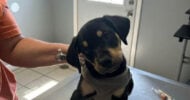Cavities in kids are common, and many children are unable to complete dental work without sedation. Dental anxiety must be balanced with safe and expedient dental treatment. Further information about early childhood caries can be found here. The prevalence of dental decay in children varies in different groups but is as high as 85 percent in some populations.
Sedation is recommended for the completion of dental work in children with significant fear/anxiety, limitations in understanding instructions due to age or special needs, or significant amounts of dental work. If multiple teeth must be treated, sedation facilitates treatment in one setting rather than over multiple appointments.
The risks of sedation must be weighed against the risk of not completing treatment while considering the emotional consequences of “powering through” without sedation. Dentists and parents are commonly faced with the decision of when and how to sedate children for dental work, with both parents and dentists having a common goal of safety and health for the child. Parents may be reluctant to agree to sedation. Principles to guide discussion between these two stakeholders include the planned depth of sedation, where it is being done (i.e. in the dental office or hospital), and who is providing it.
Depth of sedation
Sedation exists on a continuum, ranging from light sedation to general anesthesia. Each level of sedation varies in the level of stimulus (i.e., voice, touch) that elicits a response. A patient under light sedation will respond to a voice, while someone under general anesthesia will not be aroused in response to a painful stimulus. These levels of sedation also vary in their effects on the patient’s breathing and ability to breathe on his/her own, as well as affecting blood pressure and cardiovascular function. A patient under light sedation will be able to completely breathe on his/her own, with no interference from sedation, while someone under general anesthesia may need assistance from a ventilator. These levels and the corresponding criteria regarding response to stimuli, respiratory control, and cardiovascular/hemodynamic effects are specifically outlined here. Certain situations or patient characteristics, such as obstructive sleep apnea, presence of a syndrome or unique airway anatomy, may make one level of sedation more appropriate than another. The planned level of sedation should be determined by the specific needs of the patient.
Importantly, one level of sedation can easily progress to a deeper level, depending on the amount of medicine that is given. A single dose of a sedating medicine may induce light sedation in one patient but cause general anesthesia in another patient, depending on the size of the patient and individual metabolism. This variation in response to medicines and the continuum on which sedation exists, from light sedation to general anesthesia, underscores the need for training of staff and continual monitoring of patients throughout sedation and recovery.
Location of procedure
Dental procedures under sedation also vary in location – in dental offices, in hospital operating rooms, or outpatient surgical facilities. Dental offices have the benefit of familiarity for both the dentist and the patient. All of the dentist’s regular equipment is present, making it convenient for the dentist. Logistical factors like parking may be simpler for patients than driving to a hospital. The same procedure in the operating room setting typically takes significantly longer to complete than if it were done in the office, perhaps because the dental team is familiar with their environment and has all of their equipment immediately available. Lastly, the amount of time that a patient has to wait until the scheduled procedure can occur in the dental office is often shorter than in an outpatient facility or hospital, with some wait times for hospital appointments being several months long.
These three settings also differ in medical resources in the event of an emergency. All may have the standard equipment for emergency situations but vary in their level of familiarity with emergency situations and pediatric care should an emergency occur. For both dental offices and outpatient surgical facilities, emergency situations require the transfer of the patient via ambulance to a hospital. These locations can vary in distance from hospitals and in proximity to a hospital offering advanced pediatric care. Additionally, hospitals themselves differ in their preparedness to take care of children rather than adults, with some having pediatric specialists available 24 hours a day and others not having them on site.
Who is providing the sedation?
In the U.S., states vary in their requirements for who can provide sedation. Parents can ask about who will provide the anesthesia and their specific training. A single individual may do the dental work and give the sedation (“operator-anesthetist” model) or two different people can be involved in care, with one doing the dental work and one providing the sedation. Recent poor outcomes have brought scrutiny to the single-person/operator-anesthetist model, particularly for children who have smaller physiologic reserves. If something goes wrong, there is less time to intervene before the situation becomes more critical. In response to deaths during sedation for dental work, multiple professional societies have jointly recommended that the same person who provides anesthesia should not also be doing the dental work on children. However, the patient’s specific age and medical conditions, the provider’s experience, the depth of sedation planned, and the amount and urgency of the dental work allow for nuances in this discussion.
If a person other than the dentist is providing the sedation, parents can ask about what training the person has had. Most commonly, sedation in offices can be provided by Physician Anesthesiologists, Dental Anesthesiologists, and Certified Registered Nurse Anesthetists (in states where independent practice is allowed.) Each of these differs in scope and duration of training, as well as the number of pediatric cases done during training. A description of the differences in each training program can be found here. Of note, these programs differ in total amounts of training, amounts of time spent at different locations (hospital versus clinic), acuity of patient care during training, and number of pediatric cases required for certification. They also differ in the definition of “pediatric” patients, and it is key to remember that the younger the patient, the smaller their physiologic reserve and the more rapid decline in an emergency situation.
The practitioner’s training in pediatric medicine and knowledge of the diagnosis and treatment of childhood illnesses such as asthma, infections, and neurological and congenital abnormalities are critical to safety. The availability of a practitioner with this training may dictate the location of the treatment, particularly in children with comorbidities. A practical question is, “Does the anesthesia provider hold, or has held, pediatric privileges at a hospital to administer pediatric anesthesia for children undergoing outpatient surgery?”
Characteristics of a safe setting
Certain characteristics contribute to safety, no matter the level of sedation, location, or provider. Foundations of a safe environment include the presence of equipment for emergency resuscitation, such as a cardiac defibrillator for life-threatening arrhythmias and emergency drugs and airway equipment. Staff must be trained in resuscitation, such as basic life support (BLS) and pediatric advanced life support (PALS) skills. Having the equipment is important, but teams also must know how to use it. Simulation for practicing responses helps teams be ready when emergencies occur.
Safe care is also predicated on thorough, patient-specific preoperative assessment, monitoring during sedation according to American Society of Anesthesiologists guidelines for vital signs, and monitoring during recovery. Children should be cared for by trained individuals until they are meeting pre-defined criteria to leave the medical setting.
Conclusion
Safely and smoothly treating dental decay in children is facilitated through the judicious use of sedation where indicated. Parents should be empowered to ask about the type of sedation, who will provide it, how they will be monitored, and what happens in the event of an emergency. Sedation and location should be determined based on a child’s unique temperament, medical situation, and age. Safety during a procedure should never be taken for granted; informed vigilance from parents, dentists, and providers decreases the likelihood of tragedy.
Emily Knipper is a pediatric anesthesiologist.























![Why doctors struggle with family caregiving and how to find grace [PODCAST]](https://kevinmd.com/wp-content/uploads/Design-3-190x100.jpg)





![How trust and communication power successful dyad leadership in health care [PODCAST]](https://kevinmd.com/wp-content/uploads/The-Podcast-by-KevinMD-WideScreen-3000-px-3-190x100.jpg)


